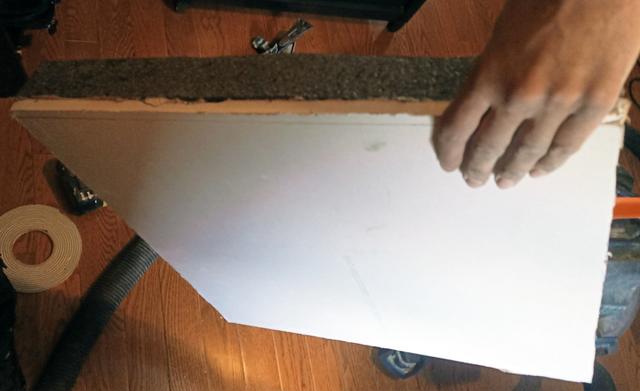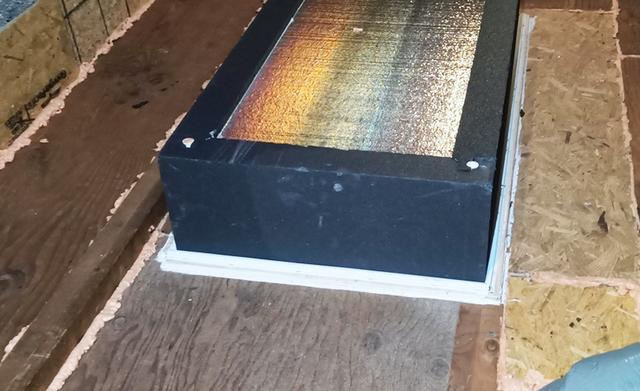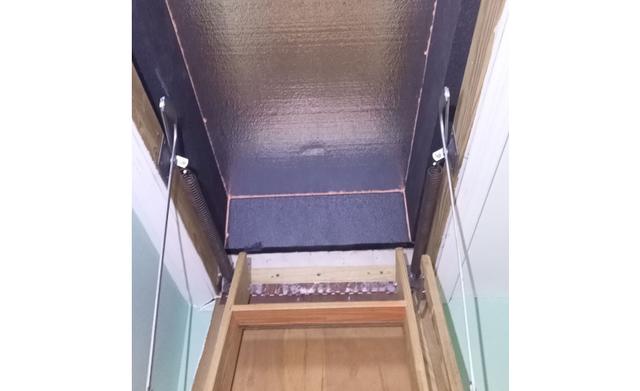
Scuttle Hole
The owner was using sealant tape to try and seal the attics scuttles seams. Every time anyone would need to access the attic, the tape would need to be taken off and reapplied.

Open Scuttle
We could not install our David Lewis Scuttle Cover because of the pipe in the way. Notice the orange ZypFoam sealant that was used to air seal the scuttle access point.

SilverGlo Foam Insulation Panel
We improvised and used our SilverGlo foam insulation panels and fastened it to a piece of sheetrock to insulate the scuttle cover.

Sheetrock & SilverGlo Foam Insulation Panel
We improvised and used our SilverGlo foam insulation panels and fastened it to a piece of sheetrock to insulate the scuttle cover.

New Scuttle Cover
We used our SilverGlo foam insulation panels and fastened it to a piece of sheetrock to insulate the scuttle cover. Also we used new wood to help frame the Scuttle cover in place. The new scuttle cover is in place and properly insulated with no air leakage.

David Lewis Hatch Cover Weather Stripping
We are ready to fasten our David Lewis Hatch Cover on top of the pull down stairs. The attic hatch has weather stripping and also is air sealed.

Finished David Lewis Hatch Cover
We can see a finished David Lewis Hatch Cover from the top of the attic. Noticed the weather stripping that's framed out so no air is leaking in or out of the attic.

David Lewis Hatch Cover
When we open the pull down stairs we can see our David Lewis Hatch Cover in place. After air sealed and weather strip is framed out, the David Lewis Hatch Cover is ready to be installed. This is a finished image.

